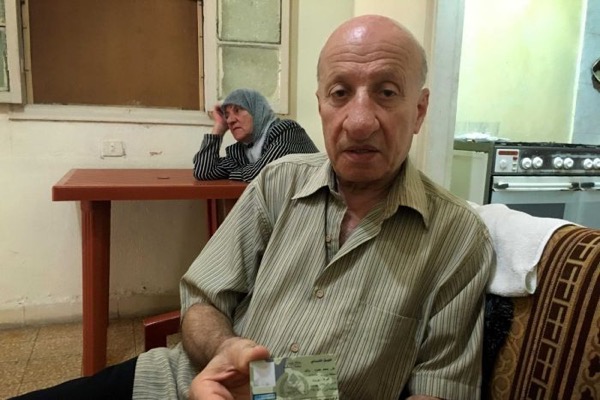
By Rebecca Collard
In his home in Beirut, a forensic worker swabs the inside of Ali Hamza’s mouth and seals the sample in a plastic bag.
Ali is providing the saliva to help unlock the mystery of what happened to his son Mohammed almost 30 years ago.
The last time Mr Hamza saw him was New Year’s Eve, 1987. Mohammed, then 21, was engaged to be married. He promised to help him and his soon-to-be wife buy furniture for their new home.
Six-weeks later, on February 8, 1987, Mohammed vanished after leaving his Lebanese army base in Jiyeh, south of Beirut.
Mr Hamza was expecting Mohammed to arrive home that evening and spend four days on leave with his family. At first it was assumed Mohammed had gone to visit his fiancee instead in her village in south Lebanon.
“But a few hours later his fiancee called us,” Mr Hamza recalled. “She didn’t know where he was either.”
They started looking for him. They called the army and the police.
“There was no trace,” Mr Hamza said. Days went by, then weeks, but no-one had seen Mohammed.
In the months after Mohammed disappeared local media ran pictures of him and other Lebanese soldiers who were missing.
The nation was in the middle of a bloody civil war. Various militias controlled the streets and the Syrian and Israeli armies occupied parts of the country.
Mohammed is just one of tens of thousands of people who vanished. Some disappeared at militia checkpoints, others said they were going to the shop, or a relative’s house and never came home.
Mr Hamza and his family thought that Mohammed might have been taken by an armed faction and was being held in a cell somewhere.
Every so often, militias and armies would release people. Mr Hamza would ask if anyone had seen his son in one of the prisons, but years passed without any new information.
All they knew was that he left the base, and after that, nothing.
17,000 people still unaccounted for
In 1990, the Lebanese civil war ended with leaders signing the Taif Accords.
The militias said they had released all their remaining prisoners. Those statements dashed the hopes of many families that their loved ones might still be alive in a cell somewhere.
Despite the painful resignation of many, Mr Hamza kept his hopes alive.
Twenty-six years after the end of the conflict, there are still 17,000 people, like Mohammed, unaccounted for, their fates unknown.
Now, the International Committee of Red Cross (ICRC) is taking biological samples from the families of the missing, in a bid to eventually match them to remains found around the country, some in mass graves.
“The families need an answer. They want to know the fate,” Megan Bassendale, a forensic advisor with the ICRC in Lebanon, said.
“That’s why we do this, to be able to give them an answer. And if we can find their loved one, to be able to return those remains so they can properly bury them, properly mourn them, and have a place to visit.”
The biological data will be added to information collected by the ICRC as part of its Ante Disappearance Data Collection program that aims to discover the fates of the thousands of missing from Lebanon’s civil war.
Unearthing of remains ‘should be government-managed’
Mr Hamza digs into his wallet and pulls out a plastic identification card. In 1997, he received it from the Lebanese army.
It has a picture of his son, his date of birth, and his status: honourable martyr.
The army decided, after 10 years with no leads, Mohammed was officially dead, but the card did not provide closure.
“We were shocked. We went and we asked: what if he’s still alive? What if he’s still somewhere?” Mr Hamza said.
He has given the biological sample to the ICRC, “just in case”.
And right now, there is little to compare any of the samples against.
“There are some remains that have been recovered but most of them have been reburied as unidentified in cemeteries around the country,” Ms Bassendale said.
Many argue a government-backed system to oversee the unearthing and analysis of the remains is what is now needed.
In Lebanon today, some of those involved in the civil war are now in power and there is little political will to dig up the gravesites found around the country.
Though the information collected by the ICRC cannot be used in prosecutions, some also fear digging into the past could stoke more tension in the country.
Without answers, many like Mr Hamza, cling to the hope that their relative is still alive. Almost 30 years after his son disappeared, he still believes he could come home.
“I know there is a possibility he might be dead. But I still hope Mohammed is alive.”
ABC.NET.AU
Leave a Reply
You must be logged in to post a comment.